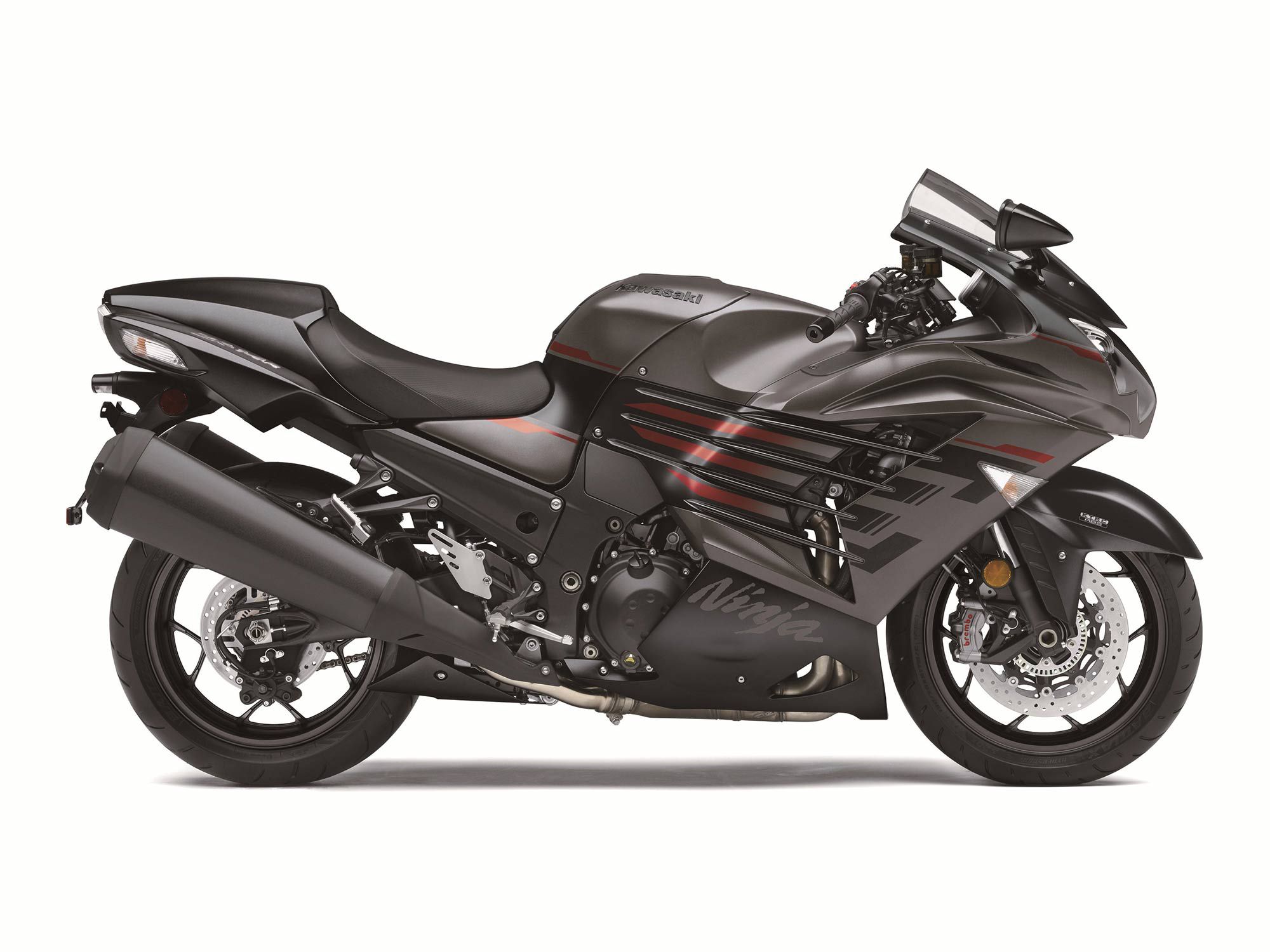
Ups
- One of the most powerful normally aspirated engines
- Stable chassis, stout brakes
- Smooth and comfy enough to sport-tour on
Downs
- Still big and heavy
- Thirsty engine
- No longer Kawasaki’s fastest or baddest model
Verdict
The ZX-14R was by far Kawasaki’s biggest and baddest sportbike model for many years until the flagship supercharged H2 series came along, and it’s still an excellent choice for someone looking for an extremely powerful, smooth, and comfortable sportbike. It’s not a razor-sharp, racetrack-ready supersport machine; more of a gentlemen’s express that can generate big speed without theatrics, apparent effort, or making physical demands on the rider. In fact, throw some soft luggage onto the big Kawasaki and you’ll have one seriously fast sport-tourer.
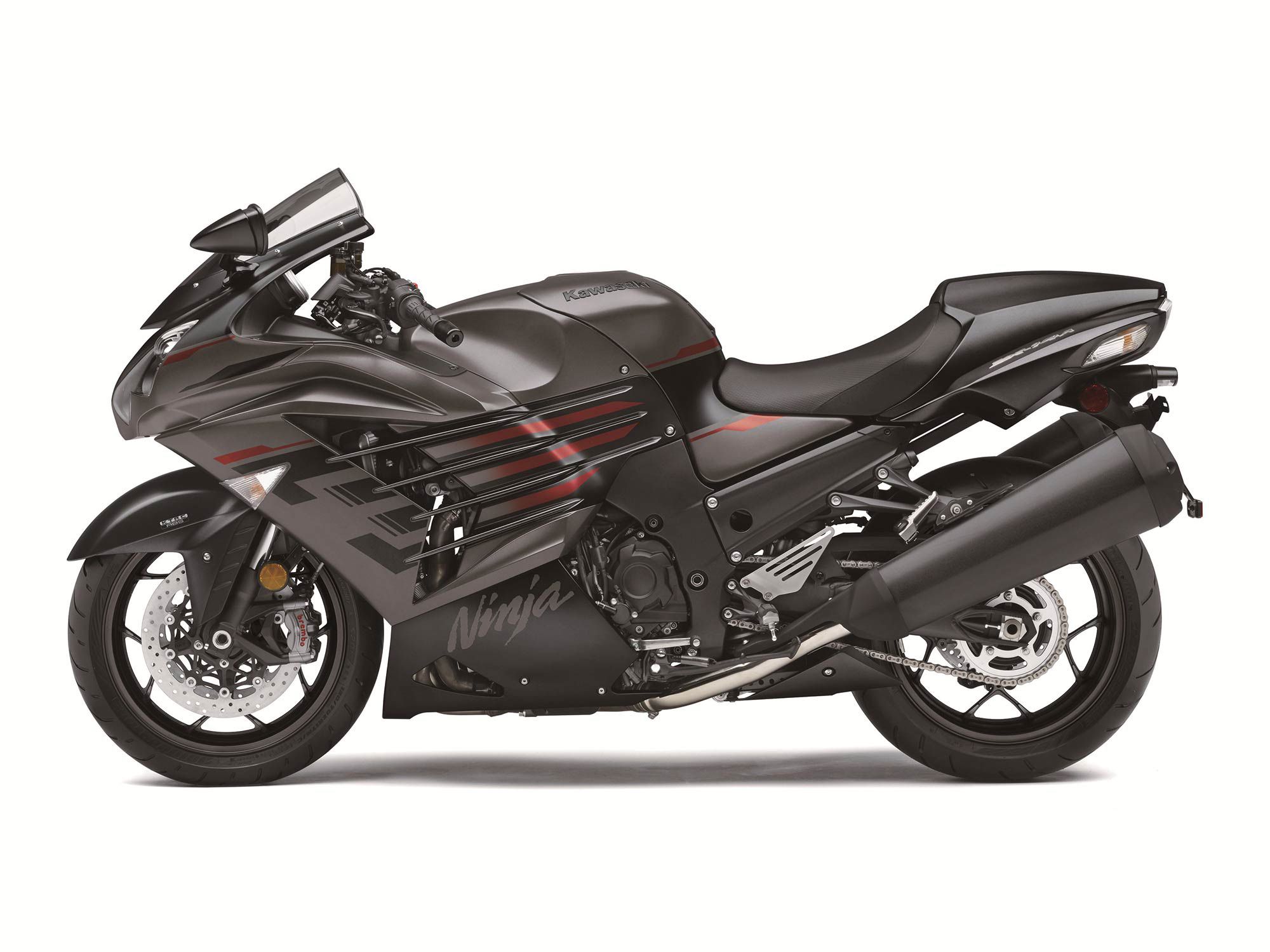
Overview
This big bruiser originally debuted in 2006 as the ZX-14 after Kawasaki became mired in controversy with the ZX-12R, reluctantly limiting that bike’s top speed to “only” 186 mph as part of a gentleman’s agreement with other manufacturers. That first R-less ZX-14 was actually softened up around the edges as Kawasaki played nice for a while; the bodywork was much more aerodynamic, the ergonomics were relaxed a bit, and the engine lagged behind the Suzuki Hayabusa somewhat, despite the ZX-14′s slight displacement advantage.
In 2012 Kawasaki decided that enough was enough, making extensive upgrades to the engine and chassis to establish the ZX-14R as the undisputed power and acceleration king. Increasing engine displacement by 89cc to 1,441cc via a 4mm-longer stroke was just the start; other changes included an all-new cylinder head with hotter cams, new forged pistons that force a higher 12.3:1 compression ratio, higher-flowing air filter and exhaust, plus beefier engine internals to keep that power flowing. The Kawasaki’s unique aluminum monocoque chassis also underwent strengthening and tweaking to handle the additional power, with improved suspension and wheels topping off the package.
Updates for 2023
There are no updates to the ZX-14R for 2023, and only a slight update to the colorway, which is now called Metallic Matte Graphenesteel Gray/Flat Ebony.
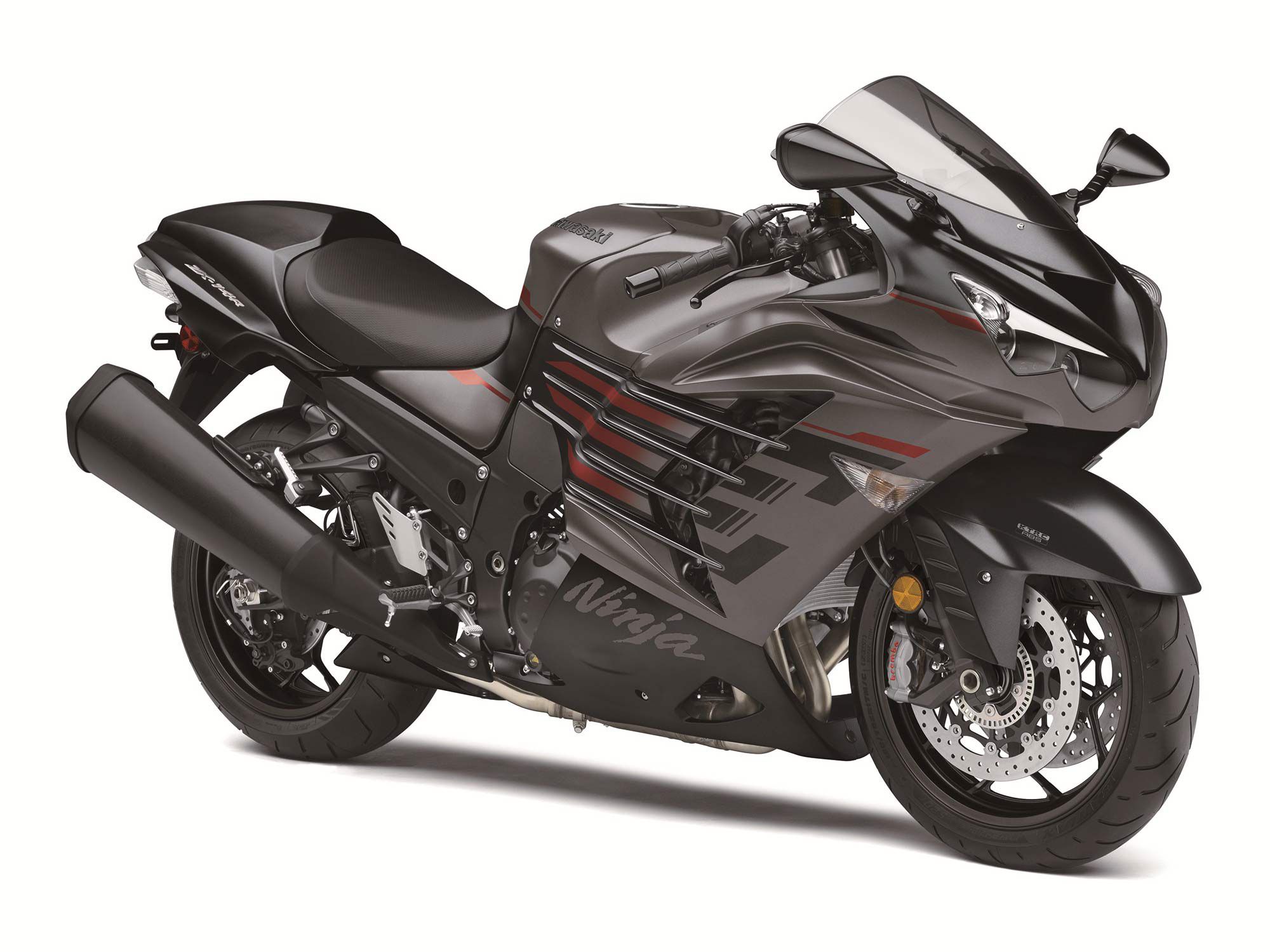
Pricing And Variants
Despite the lack of any changes whatsoever, the 2023 Kawasaki ZX-14R has an MSRP of $16,599, a considerable $1,000 increase over the previous year’s MSRP.
Competition
The only real direct competitor to the ZX-14R is the Suzuki GSX1300R Hayabusa, which comes in at a higher MSRP of $18,799 and makes the Kawasaki’s price increase a little easier to process.
Interestingly, both bikes are now sold only in the USA, as neither is clean enough to pass Euro 5 emissions regs.
Those cross-shopping the hypersport category might be interested in Kawasaki’s own Ninja H2 SX and H2, which retail for $27,500 and $31,500, respectively.
Powertrain: Engine, Transmission, and Performance
Everything about the ZX-14R’s DOHC inline four-cylinder powerplant is big and beefy. There’s its 1,441cc displacement; there’s a cylinder head with CNC-milled combustion chambers, 12.3:1-compression forged pistons, alloy connecting rods with stout small ends, and a crankshaft with meaty main journals. The transmission is heat-treated for durability and slick action, and a slipper clutch keeps downshifts from upsetting the chassis.
“Even with its hefty 584-pound wet weight and 58-inch wheelbase, the ZX-14R will easily go vertical with the front tire in the first two gears with just the throttle, and third gear wheelies require little effort,” Cycle World noted in the 2012 ZX-14R First Ride Review. But the Kawasaki isn’t just all brute power. Dual gear-driven counterbalancers smooth out the engine vibes and keep the mirror images crystal clear.
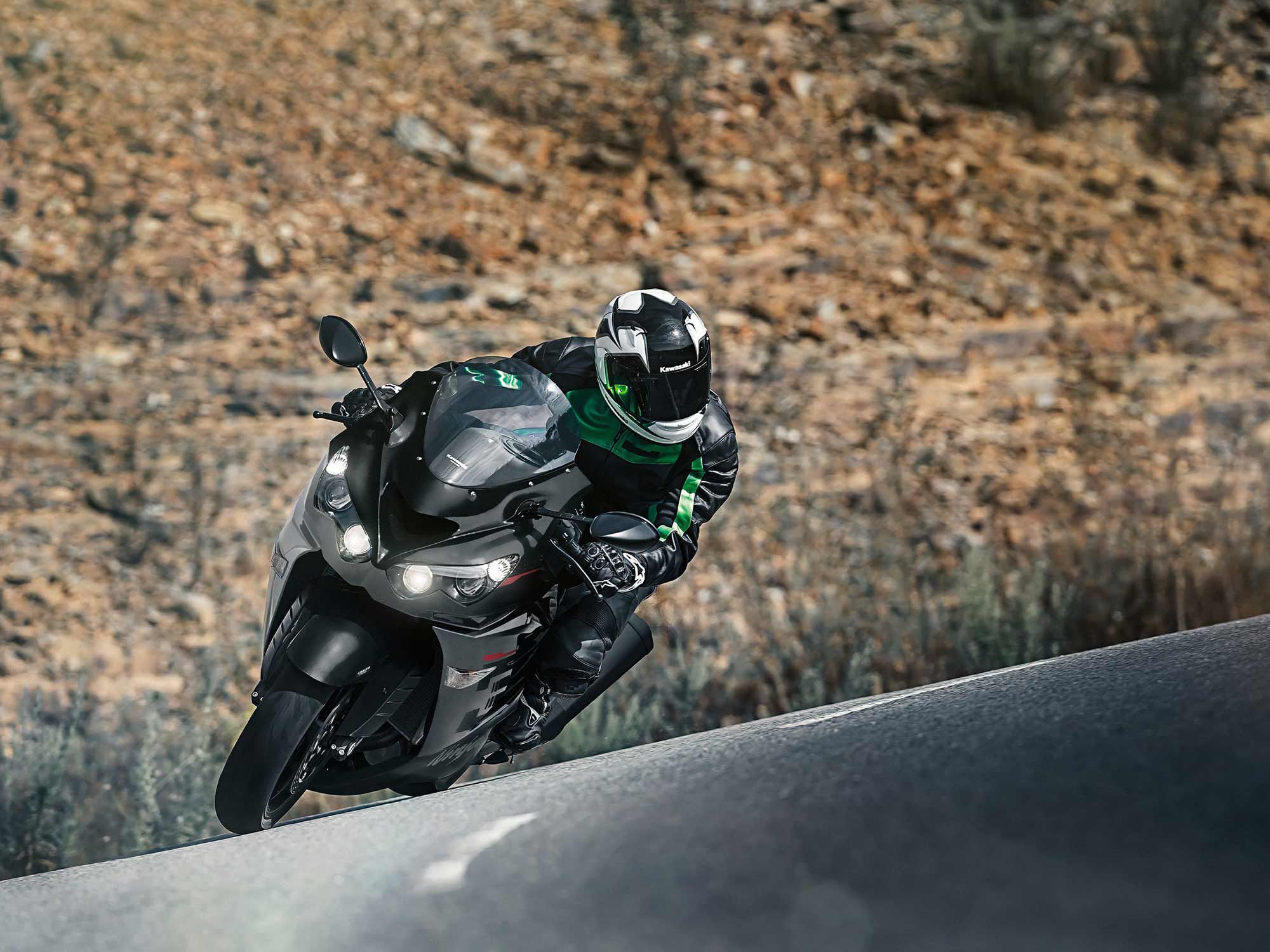
Handling
Despite its considerable heft at 593 pounds fully fueled and its rangy 58.3-inch wheelbase, the big Kawasaki comports itself well on twisty roads, displaying surprising agility even though the chassis is rock-solid in the turns. The fully adjustable suspension does an excellent job of absorbing pavement irregularities, although spring rates are a bit on the soft side.
Brakes
While the Nissin radial-mount four-piston calipers from the 2012 model worked fine, in 2018 the ZX-14R received the Brembo M50 four-piston Monoblock calipers that formerly debuted on the 2016 “Special Edition” model ZX-14R.
Together with the 310mm twin discs, the Brembos provide excellent braking power with good progressiveness and feel; a good thing, considering the Kawasaki’s acceleration capabilities.
Fuel Economy and Real-World MPG
The ZX-14R’s big engine is pretty thirsty, with our last test averaging 36 mpg; to be fair, that number included a lot of throttle twisting. Careful throttle use could probably stretch that to the high 40s.
Ergonomics: Comfort and Utility
Despite its penchant for high speed and sudden acceleration, the ergonomics on the ZX-14R are actually fairly comfortable and roomy. The reach to the bars is short so riders sit more upright than usual on a sportbike, and there’s plenty of legroom even though the Kawasaki has decent ground clearance. Even the passenger accommodations are decent, as the one-piece seat has plenty of room for a second occupant. This is a bike that could easily be mounted with soft luggage and ridden for long distances.
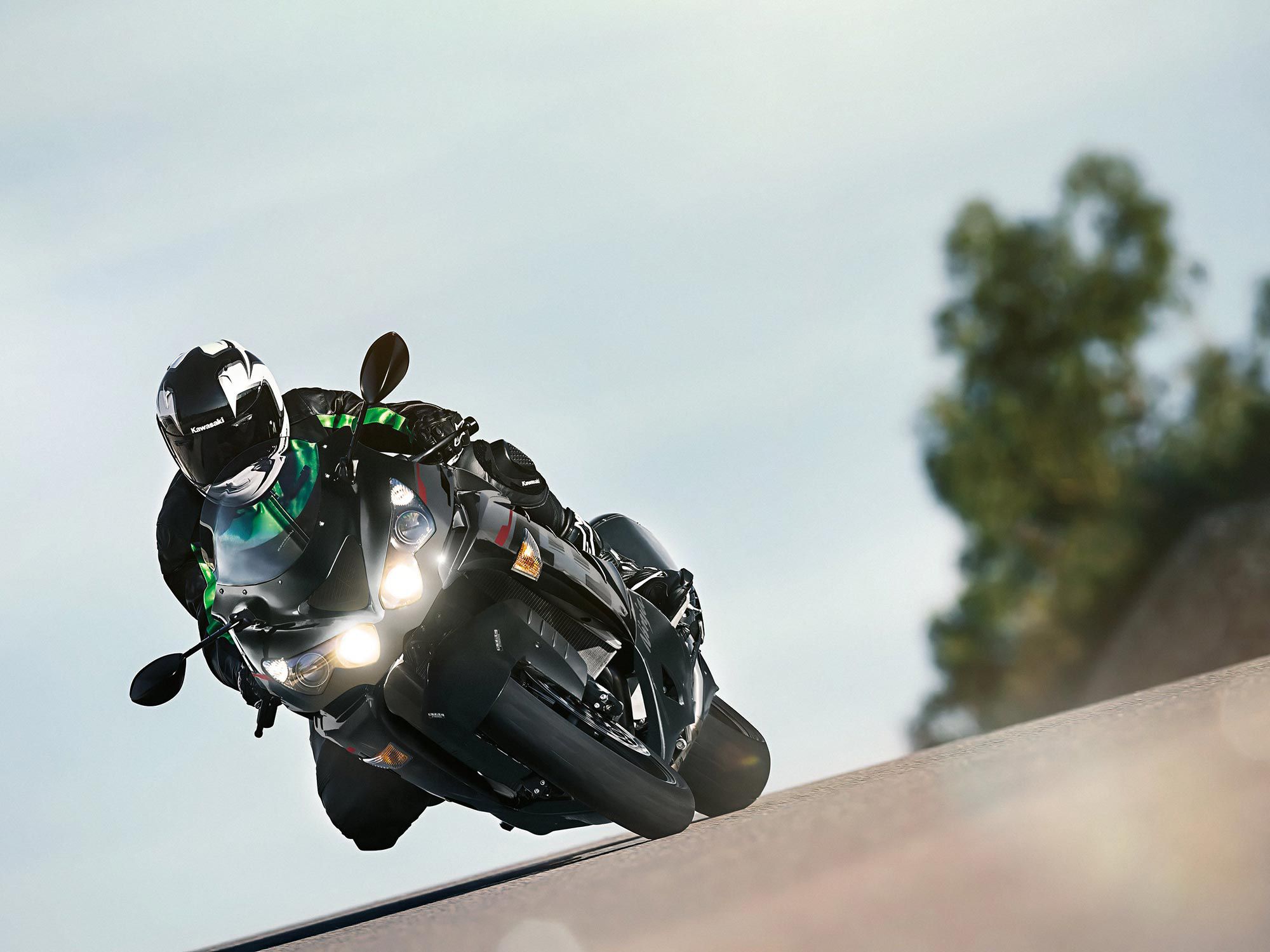
Electronics
The ZX-14R is equipped with three-mode Kawasaki Traction Control (KTRC). There is also a two-level power mode selector, and ABS is standard equipment. The Kawasaki hasn’t changed much since its 2012 debut, so the dash uses an analog tachometer and speedometer, augmented by an LCD info panel displaying pertinent info.
Warranty and Maintenance Coverage
The ZX-14R comes with Kawasaki’s 12-month limited warranty. Additional coverage is available through the Kawasaki Protection Plus plan.
Quality
The ZX-14R displays very high-quality construction, and fit and finish is excellent. However, the technology is a bit dated, as there have been no updates since the 2012 second-generation upgrade.
2023 Kawasaki ZX-14R Claimed Specs
| MSRP: | $16,599 |
|---|---|
| Engine: | 1,441cc, DOHC, liquid-cooled parallel twin; 16 valves |
| Bore x Stroke: | 84.0 x 65.0mm |
| Transmission/Final Drive: | 6-speed/chain |
| Fuel Delivery: | DFI w/ 44mm throttle bodies |
| Clutch: | Wet, slipper type; hydraulic operation |
| Engine Management/Ignition: | Ride-by-wire/TCI |
| Frame: | Aluminum monocoque chassis |
| Front Suspension: | 43mm Kayaba inverted cartridge fork, fully adjustable; 4.6 in. travel |
| Rear Suspension: | Kayaba shock, fully adjustable including ride height; 4.9 in. travel |
| Front Brake: | 4-piston Brembo M50 Monoblock radial-mount calipers, dual 310mm discs w/ ABS |
| Rear Brake: | 2-piston caliper, 250mm disc w/ ABS |
| Wheels, Front/Rear: | Cast aluminum; 17 x 3.50 in. / 17 x 6.00 in. |
| Tires, Front/Rear: | 120/70ZR-17 / 190/50ZR-17 |
| Rake/Trail: | 23.0°/3.7 in. |
| Wheelbase: | 58.3 in. |
| Ground Clearance: | 4.9 in. |
| Seat Height: | 31.5 in. |
| Fuel Capacity: | 5.8 gal. |
| Wet Weight: | 593 lb. |
| Contact: | kawasaki.com |
Source: MotorCyclistOnline.com
